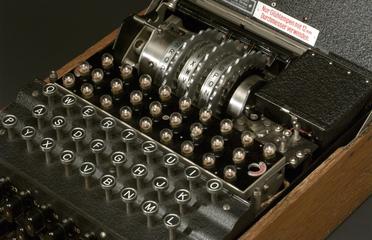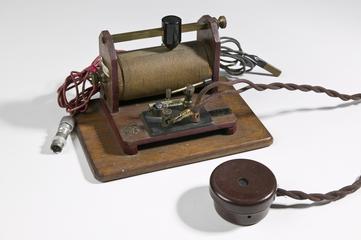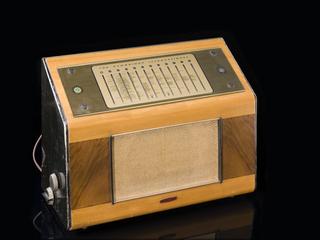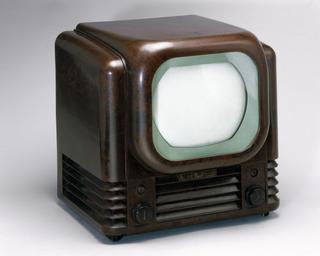
Ampex videotape recorder type VR 1000A
- maker:
- Ampex Corporation



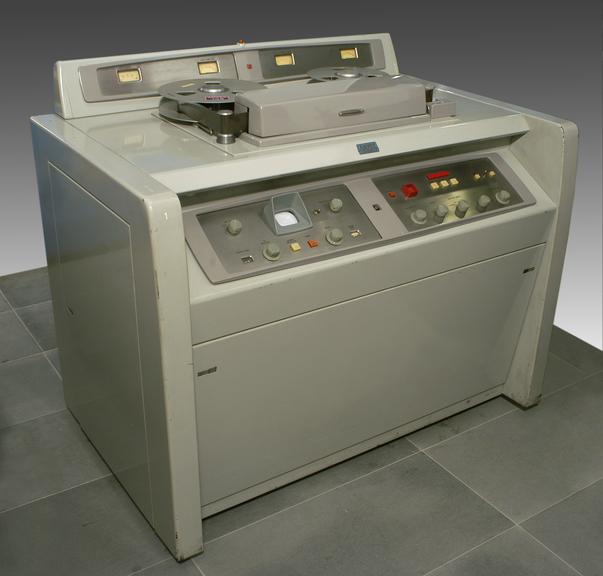
Ampex videotape recorder, type VR 1000A, serial number 329.
Since television signal contained frequencies up to about 5MHz, the speed at which the tape passed the head must also be very high – much higher in fact than the speed at which it was practicable or economical to move the tape from reel to reel. In the case of the Ampex VR1000, this problem was solved by causing the four heads to sweep rapidly across the tape, whilst running the tape at only 38cm/sec. In this way, the signal was recorded as a series of narrow tracks across the tape, the head-to-tape speed being about 100 times higher than the forward speed of the tape. The heads were carried on a rapidly spinning wheel.
The double bay of equipment with the console contained control equipment necessary to ensure a steady picture: servo-mechanisms and their associated electronics for controlling the speed of tape movement and head-wheel rotation and the means of switching the replay signals from one head to another as the wheel rotated.
The Ampex VR1000 was the first successful machine for recording television signals on magnetic tape with both picture and sound signals being recorded. The tapes available at the time of the machine’s introduction gave a playing time of just over one hour.
Until the mid-1950s there was no effective way of recording television signals, and the vast majority of programmes were broadcast live. This constrained both the format and, in the case of sporting fixtures, the transmission time of programmes. Television performances were ephemeral, and few survive in any recorded form. The invention of the videotape recorder, by engineers at Ampex in 1956, therefore revolutionised television. It started the transition to the current practice, in which virtually all programmes are pre-recorded and edited before transmission.
The Radio Corporation of America (RCA) had demonstrated an experimental videotape recorder in 1953, which eloquently demonstrated the core problem: there is so much information in a television signal that it took one and a half miles of tape to record just four minutes.
The videotape recording machine invented by Charles Ginsburg and his team at Ampex overcame the obstacle by using rapidly rotating recording heads to 'scan' across the width of tape, laying down a succession of overlapping 'stripes' of recorded material moving at the comparatively slow rate of 15 inches per second. With this system a 10-inch spool of 2-inch-wide tape could carry 1 hour of television.
Ampex introduced the Ampex VR1000 videotape recorder in the US in 1957 and the machine was used in Britain from 1958 onwards. The basic recording format established by the Ampex VR1000 remained the standard for professional applications into the late twentieth century. The Ampex VR1000 videotape recorder was sufficiently expensive that it could be afforded by television broadcast companies and some of the largest individual television stations in the US and elsewhere. It remained in use into the 1960s.
Details
- Category:
- Radio Communication
- Object Number:
- 1970-173
- type:
- recorder
- credit:
- Ampex Great Britain Limited
